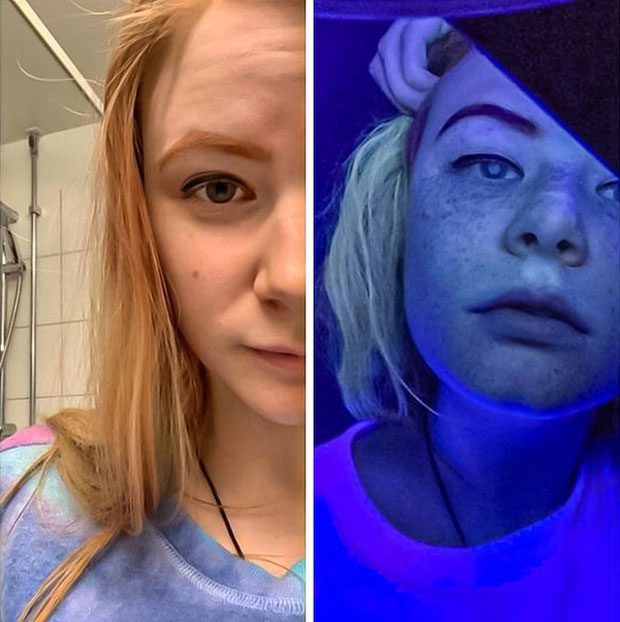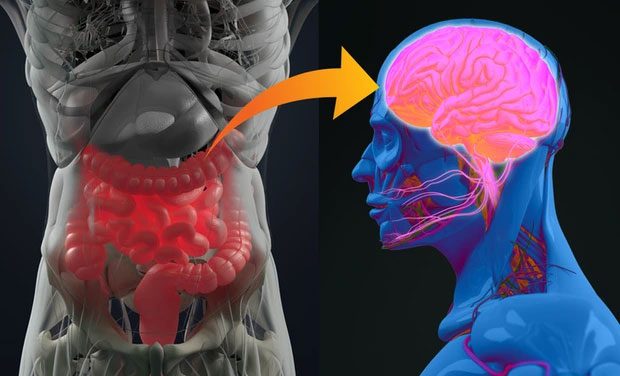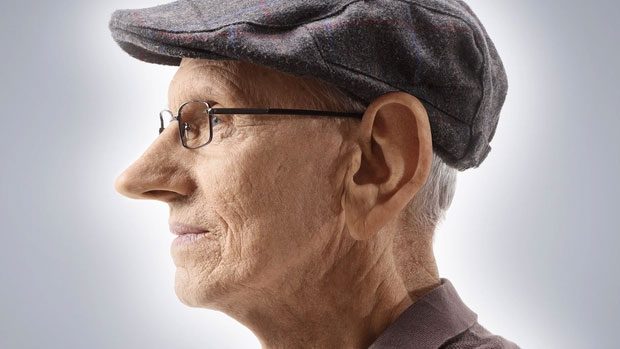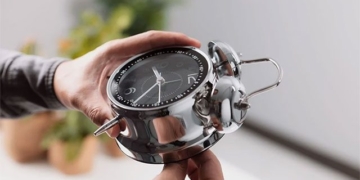No one would think that their smooth skin could look so “colorful” under UV light, right?
The human body is a complex machine, and it can take a long time to understand all its secrets. Researchers have tried to explore the surface of various issues, but not all secrets have been decoded. For instance, human consciousness and the subconscious remain a mystery.
Below are 8 parts of the body that may be considered “common knowledge” among people, yet they still hide many mysteries that not everyone knows.
Mysteries of the Human Body
- 1. Human skin looks very different under UV light
- 2. Your brain “freezes” when it detects a sudden drop in temperature
- 3. Stress can change the size and shape of your heart
- 4. Dancing increases your brain’s white matter and cognitive power
- 5. Gut bacteria can affect your mood
- 6. The modern human brain is smaller than that of our ancestors
- 7. The brain has the ability to distort memories
- 8. Ears and nose sag over time
1. Human skin looks very different under UV light

Used in medicine, exposing skin to UV light can help detect bacterial and fungal infections as well as skin pigmentation abnormalities. Under UV light, healthy skin can glow vibrantly without any additional illumination. White spots may appear on thick skin, yellow spots on oily areas, and purple patches on dry skin.
2. Your brain “freezes” when it detects a sudden drop in temperature
Whenever the temperature in the mouth drops, the brain begins to act to prevent the body from freezing to death. In other words, the brain increases blood pressure as a warning to the body.
This is also the mechanism behind the “brain freeze” you experience when eating too much ice cream at once.
3. Stress can change the size and shape of your heart
Takotsubo syndrome is a condition that causes the left ventricle of the heart to change shape and fail to pump blood properly. During short-term stress, two molecules released during stress and depression can affect the functioning of heart muscle cells, leading to temporary weakness.
4. Dancing increases your brain’s white matter and cognitive power
White matter is the tissue that connects nerve cells, helping information flow continuously between gray matter regions and the rest of the body. As we age, white matter diminishes, leading to symptoms like memory loss and difficulty solving problems.
However, studies have shown that dancing increases white matter in the brain, enhancing cognitive function and keeping the brain active.
5. Gut bacteria can affect your mood

The gut microbiome is an ecosystem made up of various types of bacteria that have co-evolved with humans to benefit both the host and the bacteria.
This type of bacteria is known to influence human psychology as it contains a large number of chemicals that our nerve cells use to communicate and regulate mood, such as dopamine and serotonin. Speaking of which, 95% of the body’s serotonin supply is produced in the gut.
6. The modern human brain is smaller than that of our ancestors
The brain is now smaller than it was 3,000 years ago. Before assuming this is bad news, remember that there is a correlation between body size and brain size. Therefore, as the body shrinks, so does the brain.
7. The brain has the ability to distort memories
We all have that one friend who tells the same story every time with different details. The reason they do this is that their memory has been distorted. We often think of our brain as a machine that stores and organizes memories like a camera or a tape recorder.
In reality, many studies have concluded that memories, even our most cherished ones, can be distorted every day. False memories can affect anyone, regardless of whether the memory is trivial or life-changing.
8. Ears and nose sag over time

As humans age, the body shrinks, but the nose and ears continue to grow.
As humans age, the body shrinks, but the nose and ears continue to grow. This happens because our skin begins to lose elasticity and cannot support itself as it once did. The nose and ears are no exception.
These cartilaginous structures change size as we age, but not because we are growing – it is due to gravity.




















































